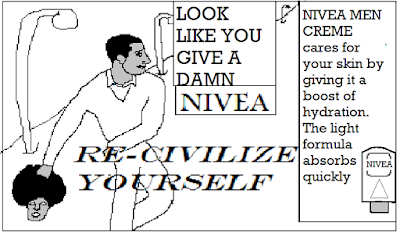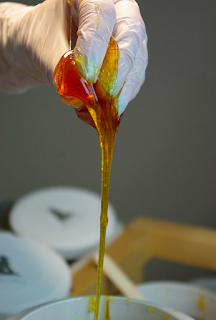Light except Lupita: The representation of Black women in magazines
I’m a body image researcher and unlike Edith Piaf I have a
lot of regrets about it. In my last post, I outlined my regret for my field’s
minimization of injustices that are simply more urgent than having body image
concerns. I also regret my field when it treats now near universal body
dissatisfaction as something caused by individual level factors i.e., because a
person compares themselves too much to others, has the wrong kind of thinking
patterns or their hormones are imbalanced. And I regret my field when it pronounces
Black women immune to developing body image issues because of our racist ideas
about Black culture and booty sizes (as noted
by Bordo, 2003).
Previous research in the body image field has even eschewed the influence of media on body image. Specifically Christopher Ferguson concludes in the biggest meta-analysis of experimental research to date on the media’s impact on body dissatisfaction: “media effects are generally minimal and limited to those with pre-existing body dissatisfaction” (Ferguson, 2013, p. 20).
I and colleagues know this need challenging and that media
images (such as the one below) do influence ourselves.
 |
| Figure 1: Nivea advert published in 2011 equating Black afro hair with being uncivilized. One example of media imagery that does affect individual's views of beauty, race and gender. |
So recently we systematically looked at the way in which
Black women were represented in popular women’s magazines. We wanted to better
understand the appearance pressures Black women face and to show that these
pressures are culturally driven (via media imagery) rather than from the
individual.
We coded every image of an adult women for her age, body type, skin shade, hair
type and nose size across eight issues of mainstream women’s magazines available
in Britain (Elle and Vogue) and Black women’s magazines (Essence and Ebony)
from 2015 to 2016.
The findings are published in the latest issue of the Psychology of Women Section Review. In
brief, we found that, of the 539 images of Black women in the magazines
examined, 83% were young, 62% were slim, 66% had light skin, and 60% had
straight hair (see Figure 2 as an example). Very few Black women were featured
in Elle or Vogue (n = 64, 11%) and when they were represented, they generally
had straighter hair, narrow noses and lighter skin tones than images of Black
women in Essence and Ebony.
An unexpected finding was that 16 (25%) of the total images of Black women in the mainstream women’s magazines were of one, single Black woman – the US-based actress Lupita Nyong’o. Nyong’o happens to have darker skin and afro hair which skewed our analysis somewhat (in that the Black women’s magazines were generally better at featuring more diverse Black women than the mainstream magazines, except for Nyong’o). But Nyong’o wasn’t in the magazines because she represents diversity but because she is the face of Lancôme, a French subsidiary of cosmetic giant L’Oreal. Both Lancôme and L’Oreal are prominent advertisers in Elle and Vogue.
 |
| Figure 2: Front cover of Ebony Sept 2015 magazine depicting 6 Black women, four of whom have relaxed hair and 5 of whom have light skin. |
Traditionally those of us in the body image research field
have noted that appearance ideal images (ie young, thin and athletic) represent
an unrealistic standard for the majority of women. Some of us recognize too
that appearance pressures are gendered, that women experience this more often
and more deeply than men (Buote,
Wilson, Strahan, Gazzola, & Papps, 2011; Jankowski, Fawkner, Slater, &
Tiggemann, 2014; Jankowski, Slater, Tiggemann, & Fawkner, 2016). However, we’ve said little
about how these standards are even more unrealistic for Black women where Black
women not only face appearance pressures to be slim and youthful but also to
lighten their skin, to narrow their noses and to relax their hair. This study
starts to do that.
If you would like a full copy of the paper or full
references please email g.jankowski@leedsbeckett.ac.uk.
Glen Jankowski is a Senior Lecturer at Leeds Beckett University. He is interested in critical-, feminist- and Marxist psychology. He is also a committee member of the Psychology of Women Section and the International Society of Critical Health Psychology.
References
References
- Bordo, S. (2003). Unbearable weight: Feminism, Western culture, and the body (2nd ed.). Berkley, CA: University of California Press.
- Buote, V. M., Wilson, A. E., Strahan, E. J., Gazzola, S. B., & Papps, F. (2011). Setting the bar: Divergent sociocultural norms for women’s and men’s ideal appearance in real-world contexts. Body Image, 8(4), 322–334. https://doi.org/10.1016/j.bodyim.2011.06.002
- Ferguson, C. J. (2013). In the eye of the beholder: Thin-ideal media affects some, but not most, viewers in a meta-analytic review of body dissatisfaction in women and men. Psychology of Popular Media Culture, 2(1), 20–37. https://doi.org/10.1037/a0030766
- Jankowski, G. S., Fawkner, H., Slater, A., & Tiggemann, M. (2014). “Appearance potent”? Are gay men’s magazines more ‘appearance potent’ than straight men’s magazines in the UK? Body Image, 11(4), 474–481. https://doi.org/10.1016/j.bodyim.2014.07.010
- Jankowski, G. S., Slater, A., Tiggemann, M., & Fawkner, H. (2016). The appearance potency of gay and straight men’s websites. Psychology of Sexualities Review, 7(2), 48–62.
- Jankowski, G. S., Tshuma, S., Tshuma, S., & Hylton, M. (2017). Light except Lupita: The representation of Black women in UK magazines. Psychology of Women Section Review, 19(1). Retrieved from https://shop.bps.org.uk/publications/psychology-of-women-section-review-vol-19-1-spring-2017.html



Great posting. Racist is a biggest issue in our society to put someone down, no one has right to do this to anyone. Everyone is beautiful in their own way as well as black people too. Need to change our thoughts for people with their color, shape n size of the body.
ReplyDeleteVisit our website as well to learn more about us Best Skin Clinic in East Delhi